-
 Bitcoin
Bitcoin $106,437.2012
0.82% -
 Ethereum
Ethereum $2,442.5287
0.82% -
 Tether USDt
Tether USDt $1.0005
-0.02% -
 XRP
XRP $2.1812
-0.27% -
 BNB
BNB $645.1327
0.45% -
 Solana
Solana $146.2379
0.39% -
 USDC
USDC $0.9999
-0.01% -
 TRON
TRON $0.2751
0.92% -
 Dogecoin
Dogecoin $0.1662
-0.23% -
 Cardano
Cardano $0.5827
-1.22% -
 Hyperliquid
Hyperliquid $37.5225
0.04% -
 Bitcoin Cash
Bitcoin Cash $479.0877
4.02% -
 Sui
Sui $2.7846
-3.27% -
 Chainlink
Chainlink $13.3576
0.84% -
 UNUS SED LEO
UNUS SED LEO $9.0252
-1.20% -
 Stellar
Stellar $0.2455
-1.07% -
 Avalanche
Avalanche $18.0680
-1.81% -
 Toncoin
Toncoin $2.8948
-1.07% -
 Shiba Inu
Shiba Inu $0.0...01164
-1.65% -
 Litecoin
Litecoin $85.0637
-0.06% -
 Hedera
Hedera $0.1526
-0.89% -
 Monero
Monero $316.2941
0.78% -
 Ethena USDe
Ethena USDe $1.0003
-0.04% -
 Polkadot
Polkadot $3.4113
-1.87% -
 Dai
Dai $1.0000
-0.01% -
 Bitget Token
Bitget Token $4.4488
5.16% -
 Uniswap
Uniswap $7.1740
3.09% -
 Pi
Pi $0.5968
11.43% -
 Pepe
Pepe $0.0...01010
-0.65% -
 Aave
Aave $264.3189
0.40%
best way to buy cheap usdt
Buying cheap USDT requires comparing exchange fees, payment method costs, and considering P2P options, but prioritizing reputable platforms for security is crucial.
Mar 25, 2025 at 05:42 am
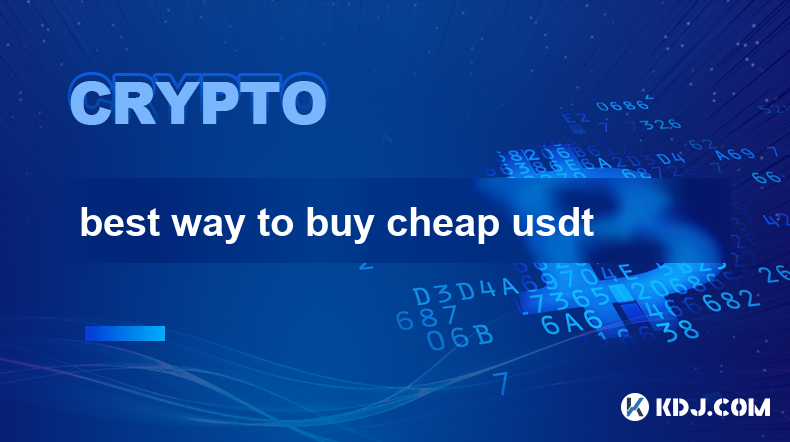
Key Points:
- Understanding USDT Market Dynamics: USDT price fluctuates slightly across exchanges due to varying liquidity and trading volumes. Arbitrage opportunities exist, but require speed and precision.
- Choosing the Right Exchange: Selecting a reputable exchange with high liquidity and low fees is crucial for cost-effective USDT purchases. Security and regulatory compliance should also be primary considerations.
- Leveraging Peer-to-Peer (P2P) Trading: P2P platforms offer potential for better rates, but carry inherent risks related to counterparty risk and scams. Thorough due diligence is paramount.
- Comparing Payment Methods: Different payment methods (bank transfers, credit/debit cards, etc.) affect fees and processing times. Analyze the total cost, including exchange fees and payment processing fees.
- Timing Your Purchases: While impossible to perfectly time the market, understanding market trends and news affecting USDT can inform your purchasing strategy.
Best Way to Buy Cheap USDT
The quest for the "cheapest" USDT involves navigating several factors within the cryptocurrency market. There's no single "best" way, as the optimal approach depends on individual priorities (speed, security, fees). However, understanding the key aspects can significantly improve your purchasing efficiency.
Understanding USDT Price Variations:
USDT, a stablecoin pegged to the US dollar, usually trades very close to $1. However, minor fluctuations occur across different cryptocurrency exchanges. These discrepancies arise from differences in liquidity, trading volume, and the exchange's own fee structures. High trading volume generally leads to tighter spreads and potentially better prices.
Choosing a Reliable Exchange:
Selecting a reputable exchange is paramount. Consider factors like trading volume, user reviews, security measures (two-factor authentication, cold storage), and regulatory compliance. Larger, established exchanges often offer better liquidity and lower fees due to economies of scale. However, research thoroughly; not all large exchanges are created equal.
Exploring Peer-to-Peer (P2P) Trading Platforms:
P2P marketplaces connect buyers and sellers directly. This can sometimes yield better prices than centralized exchanges, as sellers might offer discounts to attract buyers. However, P2P trading introduces counterparty risk. You need to carefully vet sellers to avoid scams and ensure you're dealing with trustworthy individuals. Utilize escrow services where available to mitigate risks.
Analyzing Payment Methods and Fees:
Different payment methods impact the overall cost of your USDT purchase. Bank transfers usually have lower fees but slower processing times. Credit/debit card payments are faster but often incur higher fees. Cryptocurrency-to-cryptocurrency trades (e.g., exchanging Bitcoin for USDT) might offer better rates but require you to already own another cryptocurrency. Always calculate the total cost, including exchange fees and payment processing fees, to determine the true cost of your purchase.
Strategic Timing (Market Considerations):
While predicting short-term price movements in USDT is unreliable, understanding broader market trends can inform your strategy. News events affecting the cryptocurrency market can impact USDT's price, albeit usually minimally. Avoid impulsive buying based on short-term price fluctuations; focus on a long-term strategy.
Step-by-Step Guide (Illustrative Example Using a Centralized Exchange):
- Choose an Exchange: Select a reputable exchange after thorough research.
- Create an Account: Register and verify your identity.
- Fund Your Account: Deposit funds using your chosen payment method.
- Place an Order: Specify the amount of USDT you want to buy.
- Confirm the Transaction: Review the details and confirm your purchase.
- Monitor Your Wallet: Check your exchange wallet to ensure the USDT has been credited.
Step-by-Step Guide (Illustrative Example Using a P2P Platform):
- Choose a P2P Platform: Select a reputable platform with escrow services.
- Create an Account: Register and verify your identity.
- Find a Seller: Browse available offers and select a seller with good ratings.
- Initiate a Trade: Contact the seller and agree on the terms.
- Complete Payment: Pay the seller through the platform's escrow system.
- Receive USDT: Once the seller confirms payment, you'll receive the USDT.
Frequently Asked Questions:
Q: Is it safe to buy USDT?
A: Buying USDT is generally safe if done through reputable exchanges or P2P platforms with robust security measures. However, risks exist, especially with less-known platforms or individual sellers.
Q: Are there any hidden fees when buying USDT?
A: Yes, be aware of exchange fees, network fees (for transferring USDT), and payment processing fees. These fees can significantly impact the overall cost.
Q: How can I avoid scams when buying USDT?
A: Use reputable exchanges, verify sellers on P2P platforms, never share your private keys, and always utilize escrow services when available.
Q: How often should I buy USDT?
A: There's no set frequency. It depends on your investment strategy and risk tolerance. Dollar-cost averaging (buying regularly regardless of price) is a common approach to mitigate risk.
Q: Can I buy USDT with a credit card?
A: Yes, many exchanges and P2P platforms accept credit card payments, but they often charge higher fees than other methods.
Q: What are the risks associated with buying USDT?
A: While USDT is pegged to the US dollar, its value can fluctuate slightly. There's also the risk of exchange hacks or scams, especially when using less-established platforms. Furthermore, the regulatory landscape for stablecoins is constantly evolving.
Disclaimer:info@kdj.com
The information provided is not trading advice. kdj.com does not assume any responsibility for any investments made based on the information provided in this article. Cryptocurrencies are highly volatile and it is highly recommended that you invest with caution after thorough research!
If you believe that the content used on this website infringes your copyright, please contact us immediately (info@kdj.com) and we will delete it promptly.
- Portugal's Vaccination Success: Protecting Children's Health
- 2025-06-25 22:25:12
- Marketing, Crypto, and Giants: BlockDAG's Bold Play in a Shifting Landscape
- 2025-06-25 22:45:13
- PEPD, Coin Whales, and MemeFi DeFi: A New Era?
- 2025-06-25 22:25:13
- IOTA Price Crash After Rebased Upgrade: What's Going On?
- 2025-06-25 22:45:13
- Bitcoin, Layer 2, and Lightning Network: A New Era for Digital Transactions
- 2025-06-25 22:37:03
- Bitcoin's Bumpy Ride: Navigating Support and Resistance Levels in the Crypto Wild West
- 2025-06-25 22:37:05
Related knowledge
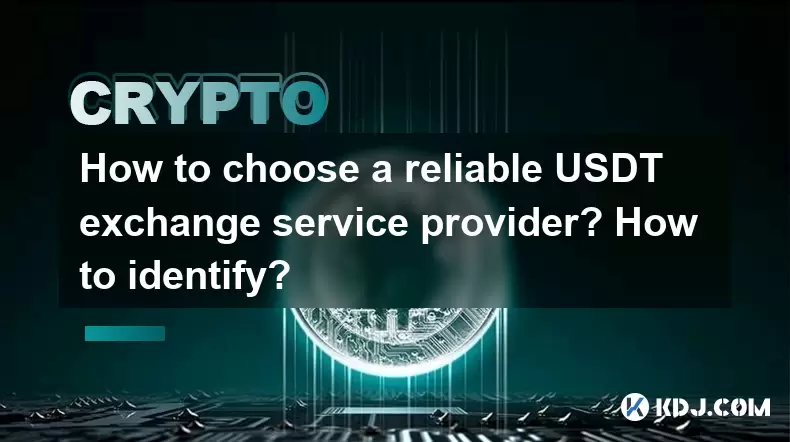
How to choose a reliable USDT exchange service provider? How to identify?
Jun 12,2025 at 03:15pm
Understanding the Role of USDT in Cryptocurrency TradingUSDT (Tether) is one of the most widely used stablecoins in the cryptocurrency market. It is designed to maintain a 1:1 peg with the U.S. dollar, offering traders and investors a way to hedge against volatility while remaining within the crypto ecosystem. Choosing a reliable USDT exchange service p...
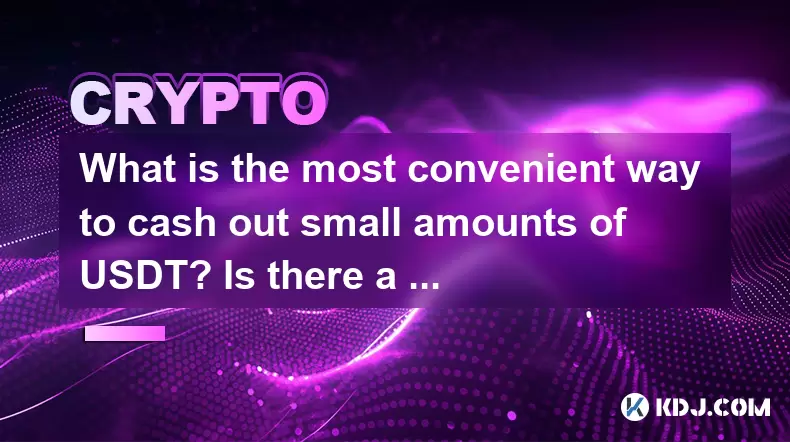
What is the most convenient way to cash out small amounts of USDT? Is there a shortcut?
Jun 11,2025 at 11:00pm
Understanding the Need to Cash Out Small USDT AmountsCashing out small amounts of USDT can be a challenge for many crypto users. Traditional methods often involve high fees, minimum withdrawal limits, or cumbersome verification processes that make it inefficient for small transactions. The key is to find a method that balances speed, cost, and convenien...
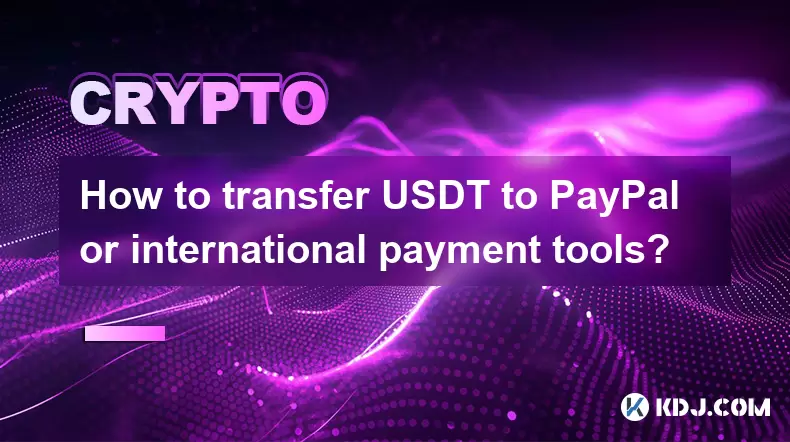
How to transfer USDT to PayPal or international payment tools?
Jun 15,2025 at 05:28am
Understanding the Basics of USDT and PayPal IntegrationUSDT (Tether) is a stablecoin pegged to the US dollar, offering blockchain-based value transfer with minimal volatility. PayPal, on the other hand, is a centralized digital wallet that facilitates fiat currency transactions globally. Direct integration between USDT and PayPal does not exist due to t...
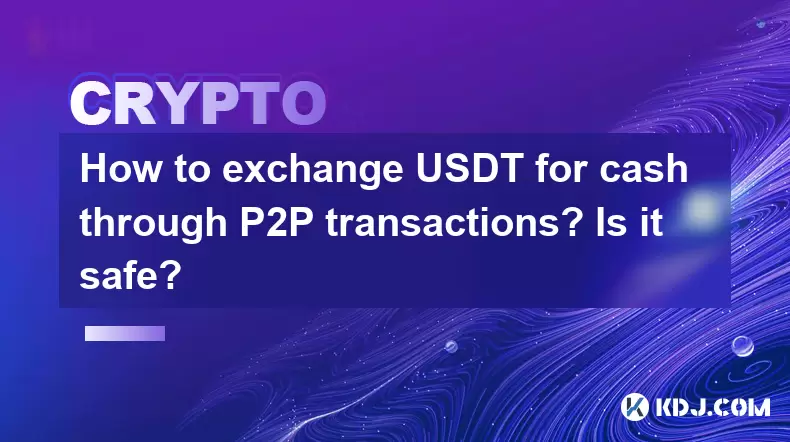
How to exchange USDT for cash through P2P transactions? Is it safe?
Jun 18,2025 at 07:56am
Understanding USDT and P2P TransactionsTether (USDT) is a stablecoin pegged to the value of the US dollar, making it a popular choice for users who want to avoid the volatility of other cryptocurrencies while still participating in the crypto ecosystem. Peer-to-peer (P2P) transactions allow individuals to trade directly with each other without going thr...
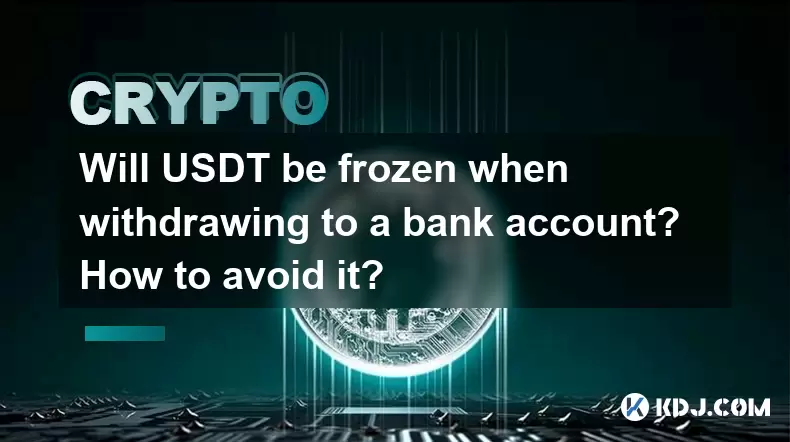
Will USDT be frozen when withdrawing to a bank account? How to avoid it?
Jun 15,2025 at 10:03am
Understanding USDT Withdrawals and Bank Account Freezing RisksWhen users decide to withdraw USDT (Tether) to a bank account, one of the most common concerns is whether their funds will be frozen during the process. This concern stems from real-life cases where individuals have encountered delays or restrictions when converting digital assets into fiat c...
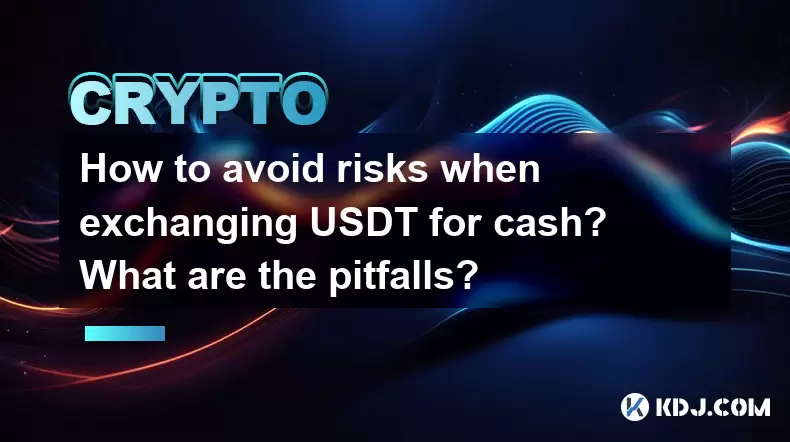
How to avoid risks when exchanging USDT for cash? What are the pitfalls?
Jun 11,2025 at 08:14pm
Understanding the Risks of Exchanging USDT for CashWhen exchanging USDT (Tether) for cash, users must be aware of the potential risks involved. As a stablecoin pegged to the US dollar, USDT is widely used in crypto transactions due to its price stability. However, converting it into fiat currency like USD or CNY can expose users to several pitfalls, inc...

How to choose a reliable USDT exchange service provider? How to identify?
Jun 12,2025 at 03:15pm
Understanding the Role of USDT in Cryptocurrency TradingUSDT (Tether) is one of the most widely used stablecoins in the cryptocurrency market. It is designed to maintain a 1:1 peg with the U.S. dollar, offering traders and investors a way to hedge against volatility while remaining within the crypto ecosystem. Choosing a reliable USDT exchange service p...

What is the most convenient way to cash out small amounts of USDT? Is there a shortcut?
Jun 11,2025 at 11:00pm
Understanding the Need to Cash Out Small USDT AmountsCashing out small amounts of USDT can be a challenge for many crypto users. Traditional methods often involve high fees, minimum withdrawal limits, or cumbersome verification processes that make it inefficient for small transactions. The key is to find a method that balances speed, cost, and convenien...

How to transfer USDT to PayPal or international payment tools?
Jun 15,2025 at 05:28am
Understanding the Basics of USDT and PayPal IntegrationUSDT (Tether) is a stablecoin pegged to the US dollar, offering blockchain-based value transfer with minimal volatility. PayPal, on the other hand, is a centralized digital wallet that facilitates fiat currency transactions globally. Direct integration between USDT and PayPal does not exist due to t...

How to exchange USDT for cash through P2P transactions? Is it safe?
Jun 18,2025 at 07:56am
Understanding USDT and P2P TransactionsTether (USDT) is a stablecoin pegged to the value of the US dollar, making it a popular choice for users who want to avoid the volatility of other cryptocurrencies while still participating in the crypto ecosystem. Peer-to-peer (P2P) transactions allow individuals to trade directly with each other without going thr...

Will USDT be frozen when withdrawing to a bank account? How to avoid it?
Jun 15,2025 at 10:03am
Understanding USDT Withdrawals and Bank Account Freezing RisksWhen users decide to withdraw USDT (Tether) to a bank account, one of the most common concerns is whether their funds will be frozen during the process. This concern stems from real-life cases where individuals have encountered delays or restrictions when converting digital assets into fiat c...

How to avoid risks when exchanging USDT for cash? What are the pitfalls?
Jun 11,2025 at 08:14pm
Understanding the Risks of Exchanging USDT for CashWhen exchanging USDT (Tether) for cash, users must be aware of the potential risks involved. As a stablecoin pegged to the US dollar, USDT is widely used in crypto transactions due to its price stability. However, converting it into fiat currency like USD or CNY can expose users to several pitfalls, inc...
See all articles
























































































